Key takeaways
- Paranormal infotainment combines factual storytelling with mysterious elements, appealing to both skeptics and believers.
- Researching haunted history blends traditional methods with modern tools, enriching the exploration of emotional narratives and human connections.
- Analyzing paranormal findings requires balancing skepticism with open-mindedness, focusing on emotional context alongside factual evidence.
- Sharing discoveries fosters meaningful conversations and connections, transforming solitary research into a collective exploration of history and memory.
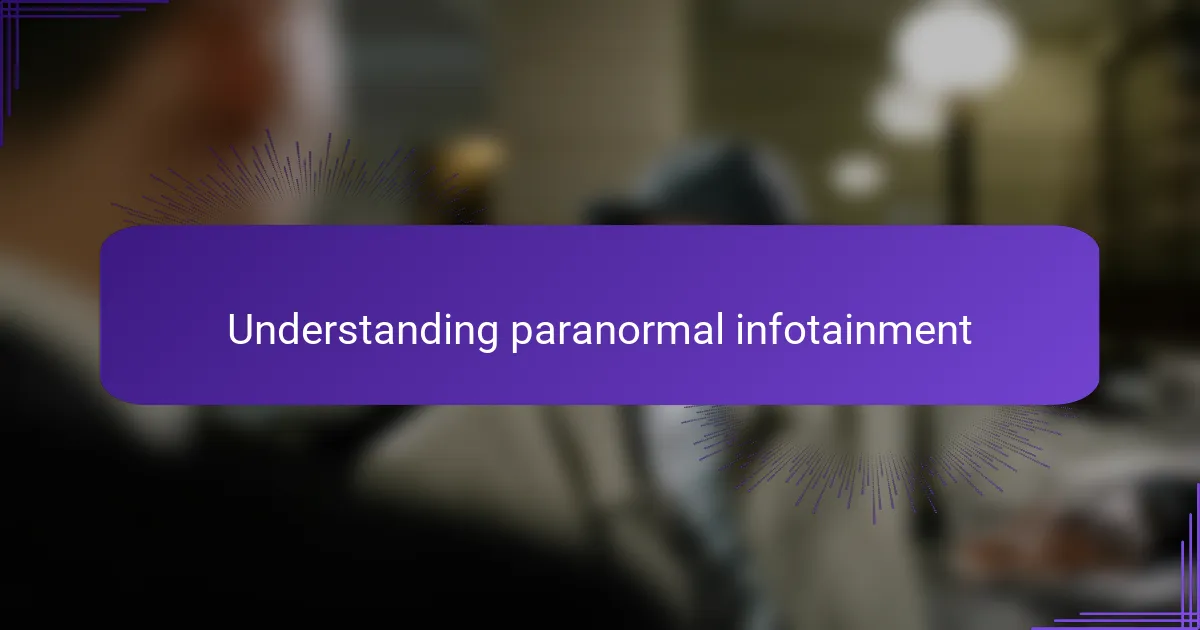
Understanding Paranormal Infotainment
Paranormal infotainment blends factual storytelling with mysterious elements that spark curiosity. I’ve always found this mix thrilling because it invites me to question what lies beyond the surface of history and science.
When I first dove into this genre, I was surprised by how stories often balance between skeptics’ logic and believers’ passion. Don’t you find it fascinating how that tension keeps us coming back for more, hungry to uncover hidden truths?
This genre isn’t just about ghost stories or legends; it’s about exploring the unknown in a way that feels both entertaining and thought-provoking. For me, paranormal infotainment is like a bridge connecting me to the past, making history feel alive and charged with mystery.
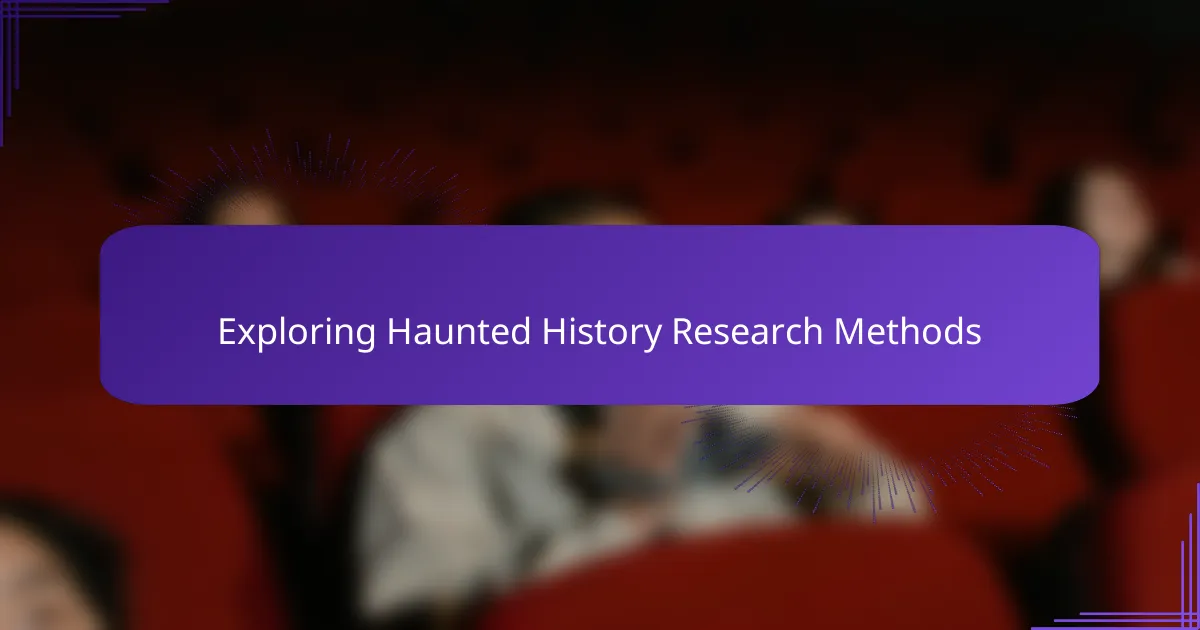
Exploring Haunted History Research Methods
Diving into haunted history research required me to blend traditional methods with a curiosity for the unexplained. I began by digging through ship logs, passenger lists, and firsthand survivor accounts, always asking myself: What details hide just beneath the surface that others might overlook? It was like piecing together a puzzle where some fragments whispered of something… otherworldly.
I found that mixing archival research with visits to museums and maritime collections added rich context to my findings. But what truly sparked my excitement were the oral histories—interviews with descendants and local experts who shared stories tinged with uneasiness and wonder. Have you ever experienced that thrill when a tale feels both credible and eerie at once? That’s where haunted history comes alive for me.
Finally, I didn’t shy away from using modern tools like digital databases and forums where enthusiasts swap theories and discoveries. This blend of old-school digging and tech-driven sleuthing made every revelation feel personal and immediate. The process reminded me that exploring haunted history isn’t just about facts; it’s about connecting with human emotions trapped in time.
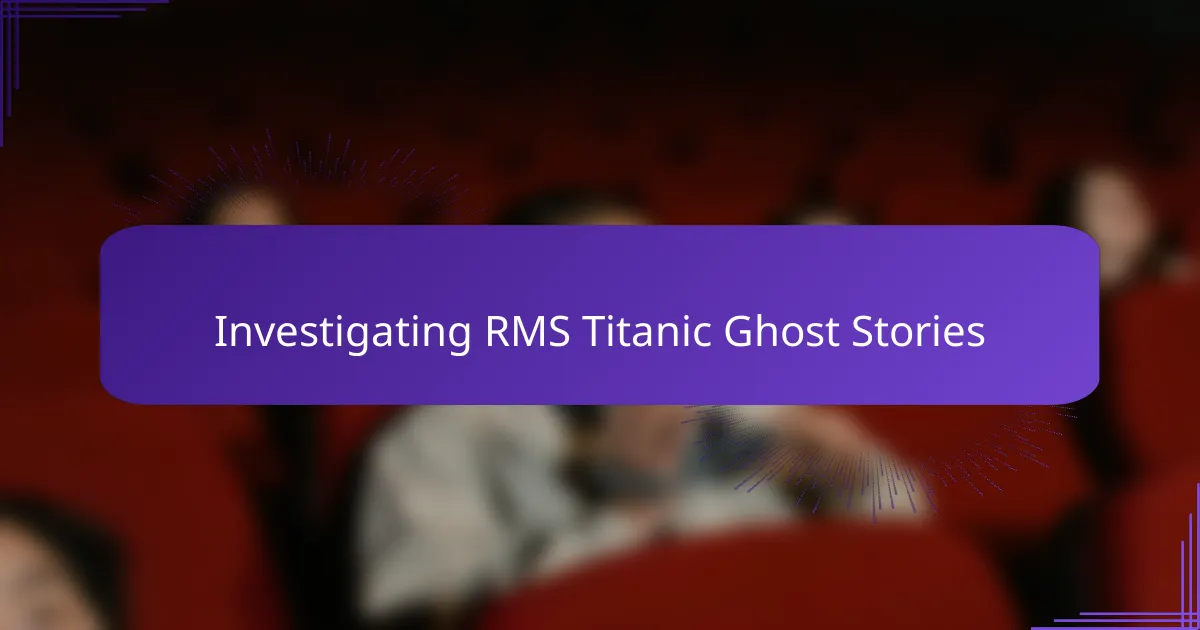
Investigating RMS Titanic Ghost Stories
When I first encountered the ghost stories tied to the RMS Titanic, I was both skeptical and intrigued. How could a shipwreck submerged for over a century still inspire tales of spectral sightings? Yet, as I sifted through eyewitness testimonials and paranormal investigators’ reports, I sensed something more than mere folklore at play.
One moment that stood out to me was reading about crew members aboard modern vessels near the Titanic’s wreck site who reported sudden chills and unexplained shadows. Could these be echoes of the ship’s tragic past, or are they simply tricks of the mind? Wrestling with these questions made the investigation intensely personal and deeply human.
What fascinated me the most was hearing descendants of Titanic passengers share stories passed down through generations—accounts not just of loss but of lingering presences felt in quiet moments. Have you ever thought about how grief and memory might manifest beyond the grave? Exploring these ghost stories made me realize that hauntings might be less about ghosts themselves and more about the enduring bonds between the living and the dead.
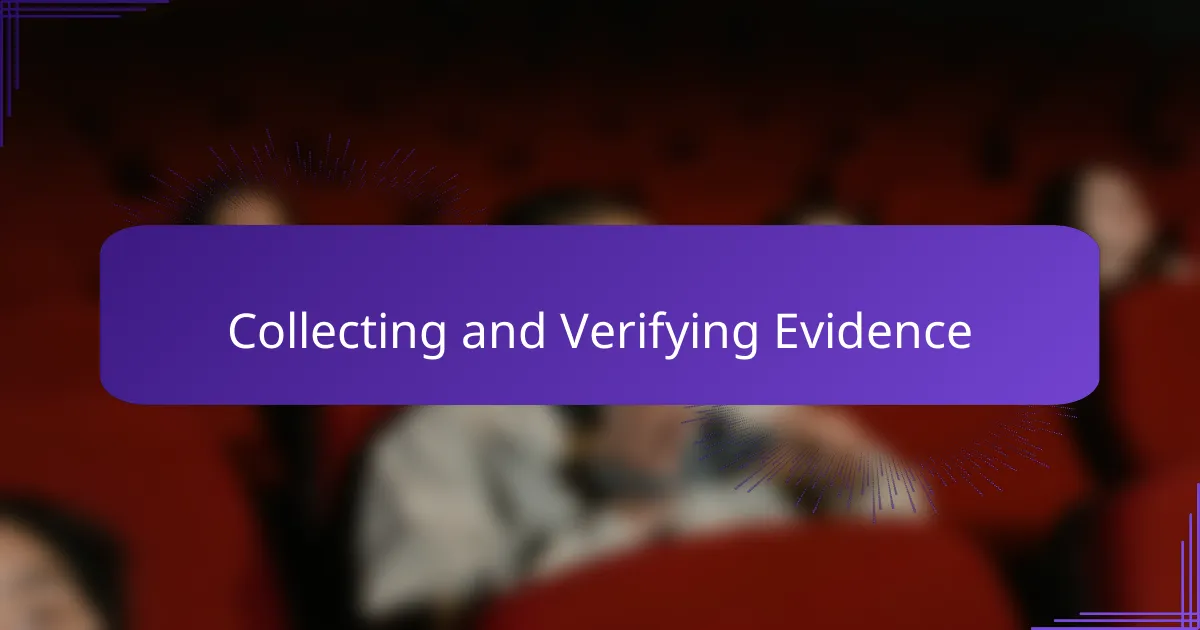
Collecting and Verifying Evidence
Collecting evidence for such a loaded topic meant I had to be meticulous. I pored over archived documents, photographs, and recorded interviews, always questioning their origin and reliability. How do you decide which source feels trustworthy when dealing with stories that teeter between history and legend?
Verifying each piece of evidence became a careful dance between skepticism and open-mindedness. I cross-checked eyewitness accounts with official records and compared paranormal reports from independent investigators, looking for patterns rather than isolated claims. It was like assembling a mosaic where every fragment mattered, no matter how small or eerie.
One thing stood out clearly: some stories gained credibility when repeated by multiple, unrelated witnesses, especially those connected to the Titanic’s survivors or crew. Have you noticed how firsthand memories sometimes carry a weight that no secondhand retelling can match? Those moments made me feel closer to the ship’s legacy—and to the mysteries still swirling around it.
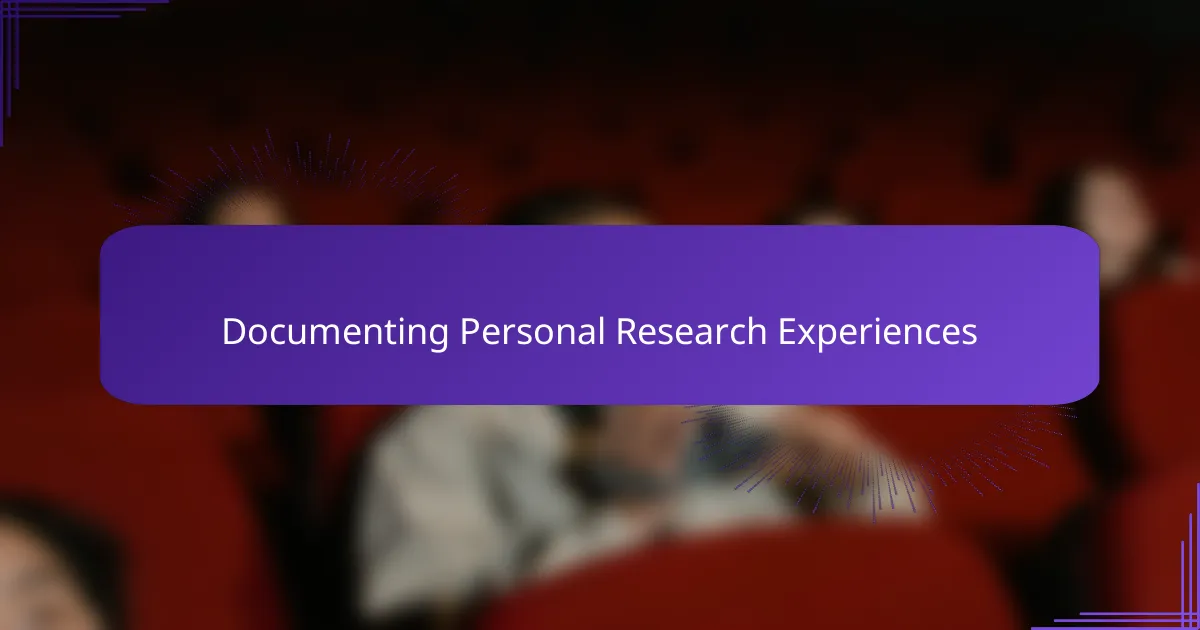
Documenting Personal Research Experiences
Documenting my personal research experiences felt like stepping into the shoes of a detective unraveling a deeply emotional mystery. Each note I took, every photograph I scanned, carried a weight that made me pause and reflect—was I simply recording facts, or capturing echoes of lives forever changed by tragedy? Have you ever felt that a piece of paper or a faded image holds more than history; it holds a story waiting to be heard?
I kept a detailed journal, not just to track findings but to record my reactions and questions as they surfaced. There were moments when reading a survivor’s letter brought a lump to my throat, reminding me that beyond the paranormal, these were real people with real grief. That personal connection made my research feel less like a project and more like a tribute.
Sometimes, I wondered if my notes could ever do justice to the complex emotions behind the ghost stories—I found myself writing down not only what I discovered but how it made me feel. Isn’t that the essence of documenting history infused with the paranormal? It’s about weaving together cold evidence with the warmth of human experience.
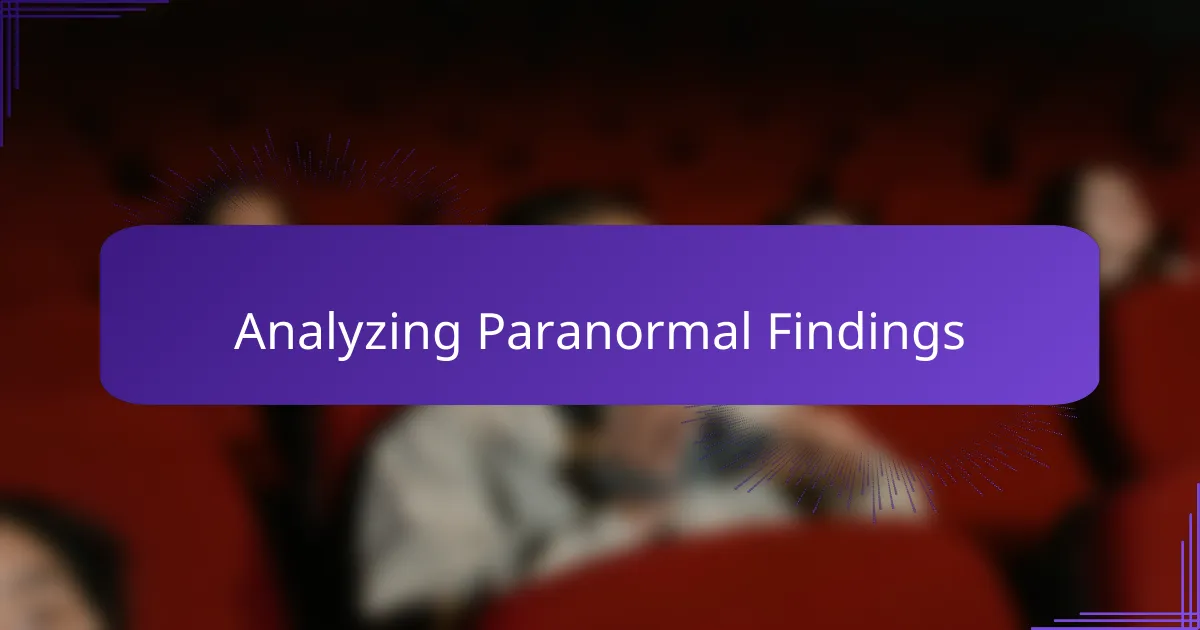
Analyzing Paranormal Findings
When I began analyzing the paranormal findings related to the Titanic, I quickly realized that patterns matter more than isolated incidents. Multiple reports of unexplained sounds or sudden temperature drops near the wreck site, especially when coming from independent sources, made me pause. Isn’t it intriguing how separate voices sometimes echo the same mysterious story, suggesting something beneath the surface?
Sorting through detailed investigator logs and eyewitness testimonies, I found myself constantly weighing the line between genuine phenomena and our mind’s tendency to fill gaps with imagination. Have you ever caught yourself questioning if a cold breeze is just that—or a message from someone long gone? That inner debate kept me grounded while staying open to possibilities.
What stood out most was how the emotional weight behind each claim added depth to the findings. Reading a descendant’s heartfelt description of sensing a presence felt different from clinical reports—it was raw and real. Could these feelings be the true heartbeat of the paranormal, where history and humanity intertwine? To me, that’s what makes analyzing these findings both challenging and profoundly moving.
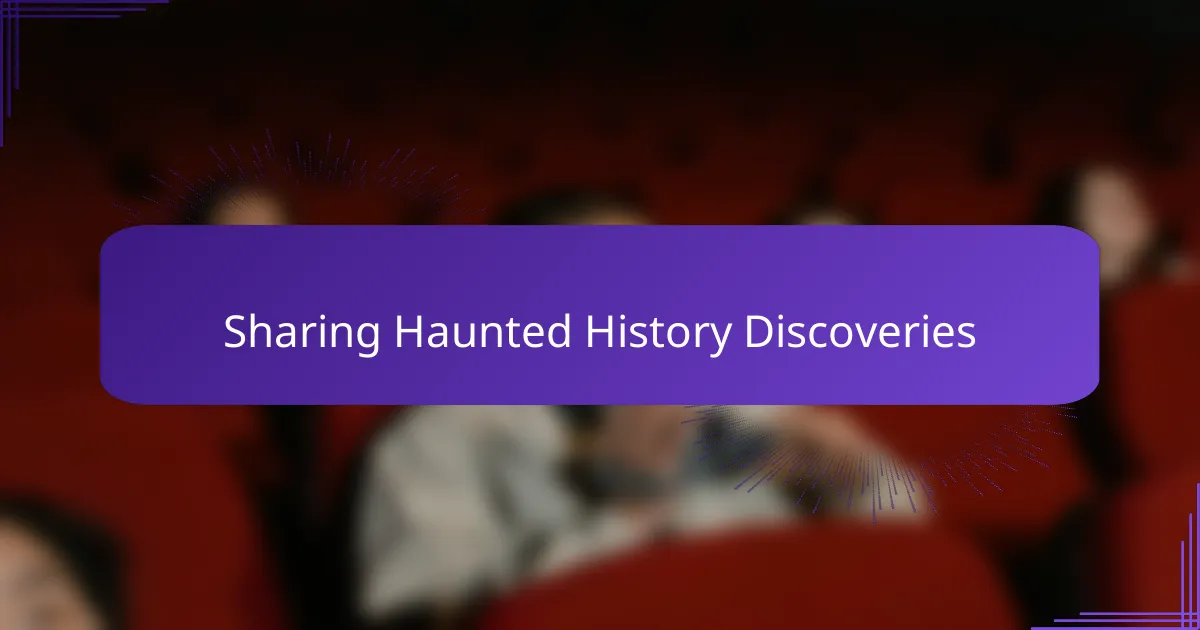
Sharing Haunted History Discoveries
Sharing my haunted history discoveries felt like opening a door to stories that had long waited in the shadows. Each new detail unearthed wasn’t just a fact—it was a connection to people whose experiences still seemed to vibrate through time. Have you ever found yourself captivated not just by what happened, but by the lingering energy that those moments carry?
Sometimes, sharing these discoveries led to unexpected conversations. After recounting an account of spectral sightings near the Titanic wreck, a friend asked if I believed in ghosts. I realized it wasn’t about belief alone—it was about honoring the resonance those stories hold for descendants and witnesses alike. Isn’t it powerful how sharing history can become a shared experience of wonder and reflection?
What amazed me most was how others added their own pieces to the puzzle—stories passed down or personal encounters that deepened my understanding. It made me think: Could the act of sharing haunted history be as important as the research itself? For me, it transformed solitary investigation into a collective exploration of memory and mystery.